The polar bear is undoubtedly the king of the Arctic. The world’s largest land-based carnivore, polar bears can weigh up to 700kg and stalk prey for hours both on land and in water.
Although born on land, polar bears spend so much of their lives on the ice floes of the Arctic that they are the only bear species considered to be marine mammals. Their front paws – often described as being the size of dinner plates – allow them to swim for long durations as they navigate the icy waterways of their frozen kingdom.
Polar bears inhabit some of the coldest and most desolate places on Earth, which makes them incredibly difficult to see. I’ve been lucky enough to witness a number of polar bears in the wild and each time is just as exhilarating and special as the last. Discover when and where are the best places to see polar bears.
Polar bear watching in Churchill, Manitoba, Canada
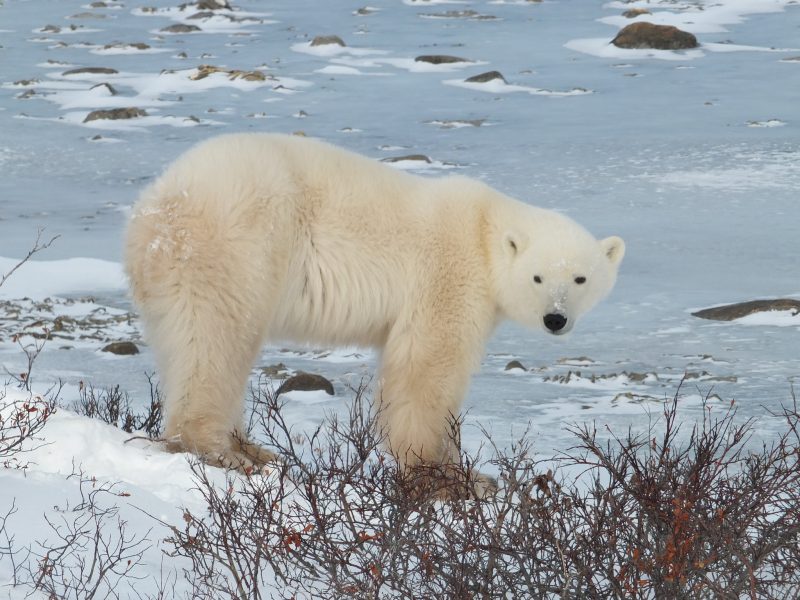
For people who don’t want to rely on Lady Luck, there are only two places on the planet where you’re guaranteed to see polar bears in the wild; Churchill in Canada, and Russia’s Wrangel Island. Of the two, Churchill is by far the most popular due to it being more accessible.
Although Churchill is known as the polar bear capital of the world, my expectations were not sky high as I made my way there for the first time. How many bears was I actually going to see – four, perhaps five? I can tell you that what I didn’t expect to see was 46 bears in two days.
Churchill’s location is fundamental in attracting bears. It juts out on the western side of the Hudson Bay in the Manitoba region of Canada. The strong winds that gyre around the bay in an anti-clockwise direction hit Churchill’s landmass and form sea ice earlier than anywhere else in the region. This draws in large numbers of bears in search of their prey, ringed seals, which haul up on the ice with their newly-birthed pups.
The bears begin gathering around the Churchill area in October and November, knowing full well that the sea ice will form here first and hunting opportunities will soon be rife. The bears of the region have been doing this for hundreds of years, possibly millennia, and the sight is spectacular and unique. As soon as the sea ice forms the bears disperse, so the window to see these creatures in Churchill is very short. They can quite literally disappear overnight. Luckily, there are numerous reserves and denning sites where you are guaranteed to see the bears during October and November before they head out for the winter.
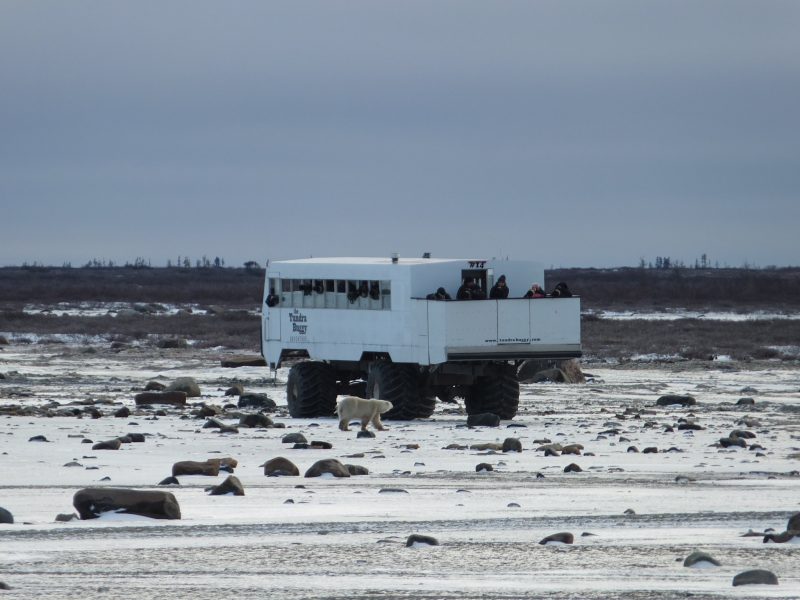
It’s worth keeping in mind that the bears you’ll witness in Churchill are very much on land. You won’t be getting those quintessential photos of polar bears on ice or snow, unless you go late in the season, as pictured. You’ll head out in a Tundra Rover, a pimped-up safari bus from which you can observe and photograph bears as they roam the autumnal shrubbery of the tundra. You’ll be about 10 feet off the ground to stay safe from even the biggest male bears.
Arguably the best thing about Churchill’s bears is the “bear drama”, a term coined by the local guides. When typically solitary bears gather together tensions run high and larger males often fight with younger rivals over territory. I recall seeing a mother bear, cub in tow, hiss loudly at an approaching male before dodging away to avoid the intruder before he became aggressive.
These spectacles often occur at close quarters to the Tundra Rovers and it’s a great privilege to watch the action unfold from a position of safety. It’s a popular destination for good reason; you would almost never witness an annual event of this scale elsewhere in the world and it’s a big part of what makes Churchill special.
Polar bear watching in Wrangel Island, Russia
Like Churchill, Wrangel Island is the only other place in the world where you are guaranteed to see polar bears. Unlike Churchill, which is relatively easy to access – especially for people in North America – Wrangel Island is extremely remote and lies 80 miles off the coast of Kamchatka in the Russian Arctic.
Known as the Polar Bear Nursery, Wrangel Island is one of the most important denning sites for polar bears. Several years ago it made the news when a whale carcass washed up on shore and over 200 bears gathered in a feeding frenzy.
But why are there so many bears in one spot? The answer lies in how the ice affects the landscape. During cooler months the bears are spread out over thousands of kilometers across the vast Arctic sea ice, but as summer beckons that ice begins to melt and the bears are forced onto land. Wrangel Island and its neighbouring landmass, Herald Island, provide the only refuge for the bears during this period.
This spectacle happens each year in July and August when the ice has completely melted. The white bears contrast against the dark backdrop of the Arctic tundra making them easy to spot, even at distance.
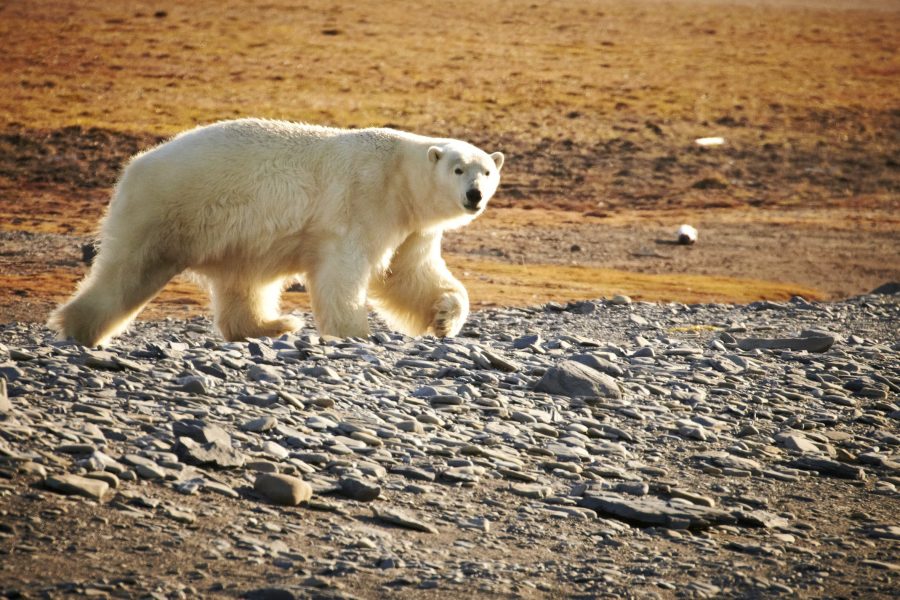
When I visited Wrangel Island, we sailed down the coastline about half a mile from shore and could see bears dotted all the way along, sometimes seeing 15 or 20 in a single glance.
We made several landings to explore on shore, but always in safe locations with patrols on high alert. Unlike other places in the Arctic, Wrangel Island is unique in that no one is allowed to carry a rifle. This means you go ashore on an island you know is teeming with hungry bears with nothing more than a stick to protect you. This certainly brought a frisson of nervous excitement to the hikes – a step too far for some who chose to stay aboard the ship.
If you’re desperate to see bears on sea ice with a pristine white backdrop, you’ll need to voyage to Wrangel Island as early in the season as possible. The bears won’t be as abundant, but your chances of getting that quintessential polar bear picture are higher.
Polar bear watching in the Svalbard Archipelago, Norway
Svalbard is a fantastic introduction to the Arctic for people wanting to get a flavour of the Polar experience. The capital of Svalbard, Longyearbyen, is easily accessible via a short flight from Oslo, and cruise prices around the archipelago are less expensive than those in the Canadian or Russian Arctic.
Unlike Wrangel Island or Churchill, you’re not guaranteed sightings of polar bears in Svalbard. That said, if you were to take a 10-day cruise you would be unlucky not to see a couple, but a good dollop of luck is required for close proximity sightings.
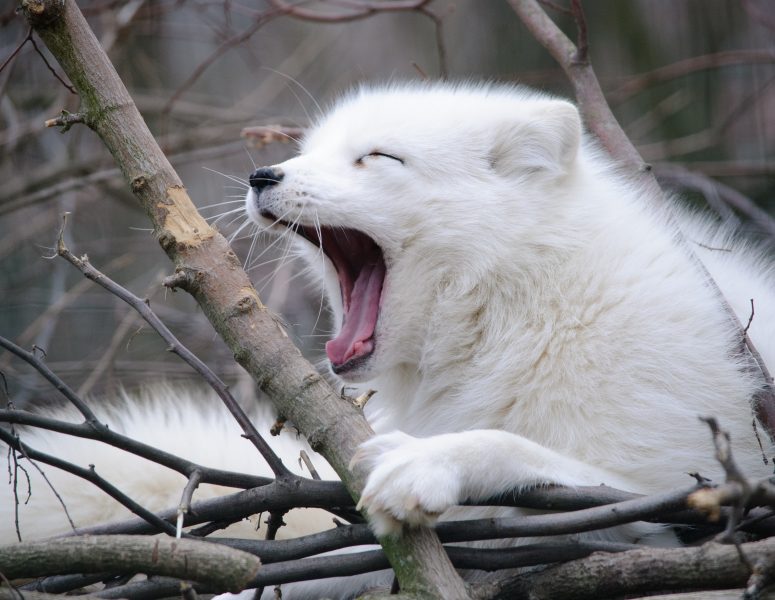
Svalbard cruises run from May until the end of August, a much longer window than that of other Arctic locations. Cruises here have an element of ‘hide and seek’ about them with guests and expedition teams alike constantly on the lookout for wildlife and scanning the vast ice floes for elusive bears, walrus and Arctic foxes.
I was seriously impressed on my last voyage when an expedition leader spotted a polar bear on a kill from six miles away using a scope. The captain then skillfully manoeuvred the ship steadily closer over a period of two hours, excitement building, before stopping just 200 yards from the magnificent creature. We watched as it devoured a seal carcass, and I exhausted two camera batteries capturing the moment.
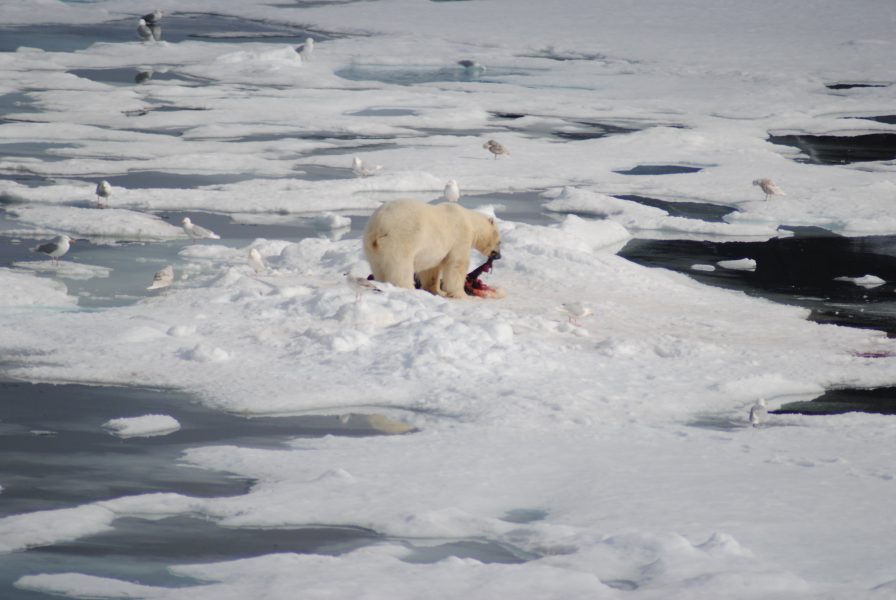
Seeing bears in Wrangel or Churchill is a bit like shooting fish in a barrel, but in Svalbard, it feels like the pinnacle of the adventure. If you’re lucky enough to enjoy a few sightings you will have the archetypal Arctic backdrop of frozen mountains and sea ice and some stunning pictures to take home.
Other places to see polar bears
Canada’s Northwest Passage is another bear hotspot. Cruises here are popular in high summer and polar bears are frequently spotted in locations such as Lancaster Sound and Devon Island. It’s worth noting the vast scale of the Northwest Passage and the fact that you’ll still need some luck to see any bears, especially up close. Polar bears are Arctic nomads and there is no telling where and when they may appear.
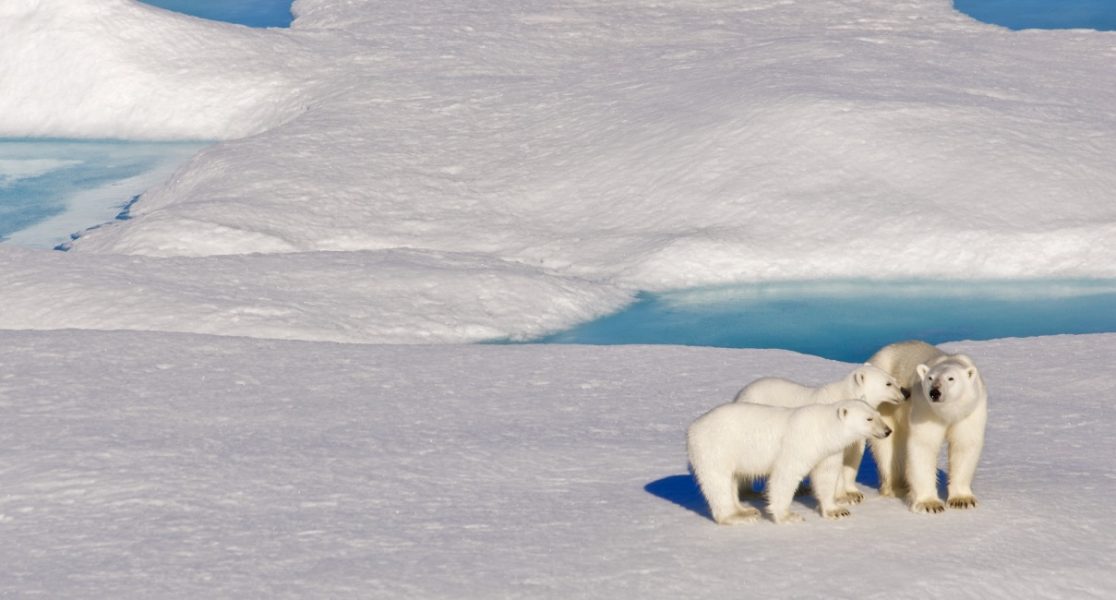
For a true sense of adventure, it’s possible to see bears on icebreaker cruises that travel through Franz Joseph Land to the North Pole region, allowing you to tick off a wildlife encounter of boastable proportions and a bucket list destination on the same trip.
Things to consider
- Although polar bears inhabit most of the Arctic, Greenland and Iceland are not great spots to see them. In Greenland, polar bears are still actively hunted and so they steer clear of accessible places.
- Whale carcasses will always draw bears and there have been numerous times in which a whale carcass has lasted the summer, guaranteeing bear sightings for that entire season.
- There is no best month to see polar bears, excluding specifics shared above for Churchill and Wrangel Island. The bears inhabit the ice all summer and it’s just a matter of being in the right place at the right time. The expertise and experience of the expedition team play a key role in increasing your chances of seeing polar bears.
- Always remember that these bears are apex predators and you need to experience them from the safety of both your expedition ship or a zodiac. Your guides are well trained in dealing with polar bears and you will never be permitted to head out onto the ice by yourself in search of bears on any expedition cruise. Witnessing bears is a privilege rather than a right, and respect and caution should always be applied, whilst of course, enjoying the magic of observing these stunning creatures in their wild habitat.
